#Miles Michaud
Text
Allah-Las Leave Them Wanting More at Webster Hall on Wednesday Night

Alla-Las – Webster Hall – April 17, 2024
In this age of lasers, massive LED screens, backing tracks and effect-laden synthesizers, a no-frills concert can feel like the bolder statement. Playing a packed Webster Hall on a rainy Wednesday night, Los Angeles rockers Allah-Las were decidedly no frills, lo-fi and all the better for it. The band lead off with “The Stuff,” the opening track off last year’s Zuma 85 release, almost purely rhythm with a steady drumbeat, the jangliest of guitars and understated monotone vocals. A pair of small screens bracketed the stage with analog slide projectors displaying simple abstract shapes, few frills, plenty of rock with a short surf-guitar solo to end the first tune.




From there, they bounced around their catalog, short-but-sweet garage rock evoking a bygone era when a pair of guitars, drums, bass and keys — and a headlong spirit — would suffice to get a club moving. “Tell Me (What’s on Your Mind)” opened with an extended noodling instrumental before dropping into a straight-heat love song. As the set went on, the projections took on more colors and shapes matching an evolving sound: Warm orange for the vocal harmonies, crisp blue for the tight changes, abstract squiggles of guitar and splotches of bass and drums.






Lead vocals were passed around from guitarists Miles Michaud and Matthew Correia to drummer Pedrum Siadatianon the dreamy psychedelia of “Prazer em Te Conhecer” off 2019’s LAHS release. Like any good rock band playing Webster Hall, Allah-Las made excellent use of the disco ball, adding an otherworldly feel to the surfy desert blues of “Sacred Sands” and a sun-dappled effect to the layered, lazy melodies of “Catalina.” The set closed with a cover of Mazzy Star’s “Blue Flower,” the lyrics “Superstar in your own private movie / I just wanted a minor part” perfectly nestling between the band’s irresistible low-key vibe and the large, cheering crowd calling for more. —A. Stein | @Neddyo


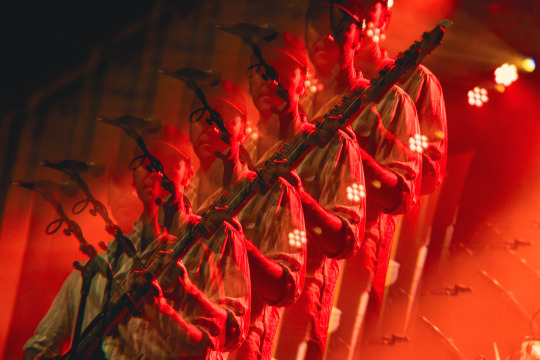






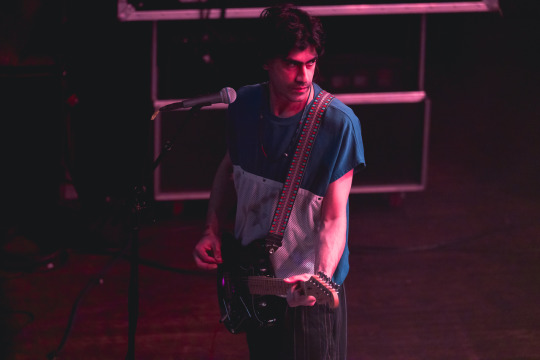

(Allah-Las play Underground Arts in Philadelphia tomorrow.)


Photos courtesy of Adela Loconte | www.adelaloconte.com
#Aaron Stein#Adela Loconte#Allah-Las#East Village#Mazzy Star#LAHS#Live Music#Matthew Correia#Miles Michaud#Music#New York City#Pedrum Siadatian#Philadelphia#Photos#Review#Spencer Dunham#Underground Arts#Zuma 85
1 note
·
View note
Text
onautique pdf
#http://vk.cc/c7jKeU#nofollow#<p> </p><p> </p><center>RADIONAVIGATION AÉRONAUTIQUE PDF >> <strong><u><a href= rel= target="_blan#<br> instrument de bord avion pdf#<br> cours de radionavigation#<br> carte balise vor francele vor pour les nuls#<br> navigation aérienne (cours pdf)#<br> instrument landing system pdf#<br> vor pdf#<br>#<br> </p><p> </p><p> </p><p>La radionavigation est un type de navigation utilisant les propriétés des ondes radioélectriques. Ell#L'unité utilisée en aéronautique est le mile nautique (NM ou Nautical Mile) Le LORAN (LOng RAnge Navigation)#système de radionavigation utilisant les#Radionavigation. Le radiocompas ADF / NDB. A. Principe général et description. Le radiocompas est un système de radionavigation qui permet#6.3 - La radionavigation Effet du vent sur le vol de l'avion La radionavigation consiste pour le pilote à situer son avion par rapport à un#voir aucun pour les aéronefs VFR les plus simples.#Institut de Maintenance Aéronautique. Radio-Navigation &. Radio-Communication 1. LICENCE 3 IUP2. Denis Michaud. 2005-2006.#7000 pour tout avion VFR n'ayant pas pris contact radio (en France). • 7500 en cas d'intervention illicite à bord. • 7600 en cas de panne r#Application à l'aéronautique : Utilisation du VOR sur une Navigation VFR à destination de Blois : L'utilisation judicieuse des moyens radio#</p><br>https://qemixojoru.tumblr.com/post/691977459911032832/chaudiere-frisquet-hydroconfort-mode-demploi-de#https://qemixojoru.tumblr.com/post/691977459911032832/chaudiere-frisquet-hydroconfort-mode-demploi-de#https://qemixojoru.tumblr.com/post/691977459911032832/chaudiere-frisquet-hydroconfort-mode-demploi-de.
0 notes
Text
New Audio: Allah-Las Share Dreamy and Atmospheric Single
New Audio: Allah-Las Share Dreamy and Atmospheric Single @AllahLas @grandstandhq @ILRecords
Los Angeles-based JOVM mainstays Allah-Las — Matthew Corriea (drums, vocals), Spencer Dunham (bass, guitar, vocals), Miles Michaud (guitar, organ, vocals) and Pedrum Siadatian (guitar, synth, vocals) can their origins to when its members first bonded over psych rock vinyl in the back room at Amoeba Records. And over the course of the past 15 years, the Los Angeles-based quartet have been busy:…
View On WordPress
#Allah-Las Zuma 85#Allah-Las Zuma 85 LP#Amoeba Records#Calico Discos#dream pop#instrumental#Jeremy Harris#John Divola#Los Angeles CA#New Audio#New Single#Panoramic House#Paradiso#psych pop#Single Review#Single Review: Allah-Las Zuma 85#Single Review: Zuma 85#Stinson Beach CA#The Rockaway Hotel
0 notes
Photo

“Two Charges Are Laid Against Bank Robber,” North Bay Nugget. November 28, 1932. Page 1 & 2.
----
City Police Recover All of Money From Bandit
---
Samuel Essa Ayoub, Late of Kirkland Lake, Held For Hold-up
----
HE IS BADLY WOUNDED
----
Constable Belanger Shot in Making Arrest; Was Quick Cleanup
----
Cornered by a police posse within a few miles of the scene of his daring escapade and nearly ten hours after he had startlingly held up the staff of the Bank of Montreal on Saturday at noon and made away with approximately $5,000, Samuel Rasa Ayoub, 26, Assyrian, giving Kirkland Lake as his home address was securely in police hands at 10 o'clock Saturday night and with $4836, practically all the haul, recovered.
He was taken on the CPR tracks, three miles west of Meadowside and only after a gun fight, in which the now prisoner had three bullets pumped into his body, and Constable J. D. Belanger of the North Bay city force suffered two slight wounds from the hold-up man's fire. Constable John Pilgrim was responsible for subduing the desperate gunman, while he was locked in Constable Belanger’s arms.
Ayoub is now a compulsory patient in the Civic hospital and under close police surveillance. This afternoon Chief Constable William Clark reported his condition as favorable and his chances of recovery very good. It will be a week or ten days before he is able to answer a court summons. Chief Clark estimated.
He has been charged by Chief Clark with “bank robbery while armed and wounding a police officer in the execution of duty."
The arrest followed a tip given the police by Austin Lariviere, North Bay, who saw the man as he emerged from the woods bordering the lake near Yellek, approximately five miles east of the city, and crossed the CPR tracks enroute to the highway. Mr. Lariviere was loading wood on a truck parked on the North Bay— Sturgeon Falls highway when he saw the man proceeding towards the Miller sawmill camp. He noted his appearance fitted the description of the bank robber and, after watching him enter the camp, came to the city to report to the police. It was about 5:44 and dusk was falling. It was only when the man crossed In front of the beam from the headlight did he get a good view of him.
Joint Operation
The capture climaxed the closing of a trap thrown out by seven police officers. They were Deputy Chief Dennis, who directed the successful hunt, Sergeant Frank Michaud, Constables J. D. Belanger and John Pilgrim of the city force and Provincial Constable N. C. Smaill, North Bay, and Provincial Constables Campaeu and Chief Constable Leclair, Sturgeon Falls.
Taklng up the tip given by Lariviere, they assembled at Yellek, and there parted to form a net. Deputy Chief Dennis Sergeant Michaud and Provincial Constable Smaill took to the CNR tracks to visit a pump house and water tank. The Sturgeon Falls officers took Constable Belanger and Pilgrim by car to within three miles of Sturgeon Falls to start them east on the CPR tracks. Provincial Officer Campeau and Leclair stayed on the highway to patrol it east to Meadowside where the officers were to meet.
When about three miles from Meadowside, Constables Belanger and Pilgrim came face to face with the robber, who was headed for Sturgeon Falls. Owing to the inky darkness, the officers did not see their man until within a few feet of him. When they came abreast, Constable Belanger grabbed him, at the same time saying “Hold on there." Immediately the robber had his automatic in play and had fired two shots, both hitting Belanger before his gun jammed and Constable Pilgrim had an opportunity to use his gun without endangering the life of his fellow officer.
Three shots had been pumped into the robber before he gave in, with the remark "You have me dead and I have all the money." The scuffling finished to the side of the railway track and, after the robber had been throw,n he was disarmed of three guns and handcuffed. Constable Belanger stood guard over him, while Constable Pilgrim summoned the other members of the posse. On Sunday afternoon, Provincial Constable Smaill visited the scene of the gun fight and found a long dagger, which the robber had either thrown away or lost in the scuffle, and a bullet-pierced silk handkerchief, presumably carried by Ayoub.
Questioned by Chief Clark in the hospital, Ayoub stated he proceeded west on Main street after leaving the bank. It waspreviously held that he went east to turn south on Ferguson street. He turned south from Main to Fraser street and continued to Oak, to hurry west along Oak street and take the CPR track to Mons Park where he entered the bush.
Caught Near Meadowside
The capture was effected by Constables Joseph D. Belanger and John Pilgrim, two of a squad of seven who hemmed in the foolhardy bandit within a three-mile square area early Saturday night. The meeting took place on the CPR tracks, three miles west of Meadowside and about 15 miles west of North Bay, and the resultant exchange of bullets came close to costing Constable Belanger his life. He suffered a wound on the left side of the abdomen when struck by a glancing bullet and had the fleshy part of his left forearm punctured by another from the hold-up man's automatic revolver. Only the fact that the bandit's gun chocked after the second shot saved the constable from fatal injuries, as the shots he received were fired when in grips with the now prisoner. Constable Pilgrim inflicted tho wounds on the hold-up man and with deadly intent. He had some difficulty in firing without endangering his fellow-officer. His first shot grazed the prisoner's right side causing a skin-deep wound. The second entered the left side, directly above the hip bone, and embedded the bullet in the organs. The third was fired at the head and passed from the left side of the back of the neck through the left cheek.
When his clothing was searched at the police station, he was found to be in possession of $4,836 in bils, in denominations ranging from $I to $50. All but $16 of the amount taken from the bank was recovered in the $4,836 found on the prisoner. He had previously been relieved of three guns, one of which he took from the bank teller’s cage. The guns used in the hold-up were a 25-calibre automatic and a 38-calibre revolver. The bank gun was of 32-calibre. The automatic was used in the gun fight with Constables Belanger and Pilgrim and when examined at the police station, was found to be jammed with a shell, the result of the second shot fired at Constable Belanger.
Likely To Recover
The prisoner, giving the name of Samuel Essa Ayoub, and Kirkland Lake as his parental home, is now in the Civic Hospital and with good chances of making a complete recovery. He was attended by Dr. G. V. Smith at the police station on Saturday night and examined at the hospital the same night.
Questioned soon after being brought to the police station, the man demurred at revealing his identity but later gave his name and his place of residence. He appeared to ha resigned to the fata that awaits him and remarked that “he expected to die and that the police had all the money” He winced two or three times as Dr Smith with the eld of Sergeant Frank Michaud applied first aid to his head wound but other than for that was apparently unexcited. He only complained of a wound In his left hand, pierced by the bullet which entered his body. With his wounds dressed, he was on the way to the hospital at midnight within twelve hours after his daring escapade and with his life hanging in the balance.
Immediately following the report of the robbery, police here threw out a net over this section of the province, making it practically impossible for the man wanted to make good his escape. Provincial police headquarters at both Haileybury and Barrie were communicated with and railway police notified. As a result, every highway in all directions was watched, in event an attempt was made by the man to get away by car, while, at the same time, both out-bound freight and passenger trains were scrutinized.
In the meantime, the city police here concentrated on making a complete and thorough check-up within the city limits and left not a stone unturned. In the event he might have been in hiding locally, taxi stands were checked, in case the robber might have hired a car to assist him in getting away and all hotels and boarding houses were visited, among other measures taken.
Knew Identity Quickly
Police learned shortly after the robbery that Ayoub had departed from Sudbury the night previous, and this was confirmed yesterday by a passenger of the same train who told the authorities of having conversed with the man during the trip to North Bay. His actions were reported to be quite normal.
Arriving here, Ayoub had spent the night at a room in the Canadian Cafe, police ascertained. Several citizens were found after the hold-up who had talked with him in the morning and these assisted in giving the police an excellent description to work with.
Ayoub, who was well known at Sudbury and several other northern towns, had sold out a hosiery business at the Nickel City about two years ago and discontinued a dry goods business at Kirkland Lake last summer, the prisoner informed police yesterday. He had never been a resident of North bay.
The climax of this, the first bank hold-up in the history of North Bay, clicked in every detail with the description of the robber and his movement before the incident. Fifteen minutes after learning of the robbery, Chief Clark and Deputy Chief Dennis knew the man they wanted an immediately set about in a methodical manner to effect his capture.
Descriptions were flashed to all centres in surrounding districts and the entire force turned loose to scour the city. It was the belief of the police that the man worked single-handed and without the aid of an automobile. This was established in the unraveling of the case.
Get Direct Tip
Shortly after 6 o'clock Saturday, the police were tipped off that the wanted man was having dinner at Miller's sawmill camp at Yellek, about nine miles west of the city. The available officers were quickly assembled and simultaneously officers from Sturgeon Falls and here set out in three cars for Yellek. Reaching the camp they learned the man had pulled out after being fed and his clothing dried. He paid the women in charge of the camp dining room $2 for the meal.
The police then set about to hem in their prey. Provincial Constable Campeau and Chief Leclair, Sturgeon Falls, took Constables Belanger and Pilgrim up the highway toward Sturgeon Falls and dropped them off at the Indian Reserve, three miles east of Sturgeon Falls, with instructions to pace the C.P.R. tracks towards North Bay. The Sturgeon Falls officers were detailed to patrol the highway eastward. Deputy Chief J. J. Dennis, Sergeant Michaud, and Provincial Constable Smaill took to the CNR. track at Meadowside to search a railway pumping station and water tank a little distance west.
Constables Belanger and Pilgrim had proceeded three or four miles on the CPR line when they saw a lone man walking towards them. Due to darkness, the officers and the hold-up man were within a few feet of one another before they became aware of his presence. As they came abreast, Constable Belanger caught the hold-up man by the front of the coat and immediately the latter had his gun in action. In the the scuffling that followed, the prisoner fired twice, one bullet grazing the officer’s side and the other piercing his left forearm before his gun jammed. Due to Constable Belanger’s body being in contact with the bandit, Constable Pilgrim withheld his fire until they separated a little. He then fired to graze the prisoner's right side. His second shot pierced his left hand and entered the body directly above the hip bone. His third shot, fired at the head, struck the back of the neck on the left side and passed out through the cheek. Despite these wounds, the robber resisted the efforts of the officers to render him powerless until he collapsed in Constable Belanger’s arms.
Officer and robber rolled down from the track to a shallow ditch with the former maintaining mastery. After subduing their captive by relieving him of his guns, three in number, and handcuffing him securely, Constable Pilgrim left to summon the other members of the squad. In the meantime. Provincial Constable Csmpeau and Chief Leclair, Sturgeon Falls, came along with a car and stopped when signaled by Constable Belanger. Constable Pilgrim returned with Deputy Chief Dennis, Sergeant Michaud and Provincial Constable Smaill. All assisted in placing the wounded prisoner in the Sturgeon Fells car to bring him to the city.
Had No Car
Admissions made to the police by the prisoner substantiate the report that he worked alone and without a car as a means of transport. After clearing from the bank he hastily proceeded wet on Main street to Fraser and down that thoroughfare to Oak street which he followed to take to CPR tracks in the extreme west end of the city. He left the tracks for the bus at Lions Park and became lost after entering the thickly wooded area bordering the lake. He wandered aimlessly until about 5.45 p.m., when he came out at Yellek, cold, wet, and nearly famished from hunger. It was dark but he found direction by lights showing from the Miller sawmill camp. Reaching the camp he knocked at the door and asked the woman who answered if he might buy a meal.
While enroute to the camp, he was seen by a man working along the highway and from his appearance was immediately suspected as the hold-up man who the same day make a clean getaway after sticking up the Bank of Montreal staff. The man immediately proceeded to the city and informed the police.
Transferred Account
Ayoub first appeared at the bank shortly before closing time when he made preliminary arrangements with Clare McGowan, ledger-keeper, to transfer an account to the North Bay branch. It is believed he purposed carrying out his stick-up plan at that time, but was discouraged by the presence of customers. He was issued a slip after giving the name of L. Fraser and a supposedly fictitious account number.
He returned after the bank doors had closed at 12 o’clock and was standing at the door when Mr. McGowan was passing out to go to luncheon. He gained admittance by representing to Mr. McGowan that he made an error in giving the number of his account in another branch.
Immediately, he met D. T. McGuire, manager, in the latter’s office, he flashed two guns and in a threatening voice ordered him to back up through the door into the main office. He then herded up the members of the staff present, L. D. Roy, teller, Jim Hatcher and Miss Leone Burton and ordered the four into the vault. When the door wouldn’t close tightly, due to the combination being thrown locked, he directed Mr. McGuire to unlock it. By stating that the combination was only known to the absent clerk, Mr. McGuire saved the staff from being locked in the airtight vault.
Baffled in his aim to silence the staff in this way, the hold-up man backed into the teller's cage all the while training his guns on the captives, and with a backhand motion scooped up the bills contained in the top drawer and picked up the teller’s revolver. The money he rammed in his overcoat pocket.
Leaving the cage, he drove the staff at the point of his guns into the cage and after slamming the door locked took the keys. He had previously demanded Miss Burton to give him the keys of the office and when Mr McGuire directed the girl to disregard the order, the bandit drew a long knife and threatened to use It unless his order was quickly obeyed.
Satisfying himself that the staff was securely held in the cage, the hold-up man proceeded to leave the office by the staff entrance but was baffled when he couldn't operate the latch. He then moved out through the manager's office, keeping his guns trained on the cooped-up staff until he made a bolt for the front office entrance.
Immediately after he left the office, the staff unlocked the cage door from the inside end. Mr. McGuire called the police station. It was then about 12;15. Miss Burton then told Mr. McGuire that she had seen the man speaking to Mr. McGowan, the ledger keeper, shortly before closing time. She was directed to get Mr McGowan, who was then at the Arcadian Grill.
Constable J. D. Belanger was alone at the police station when the call came in from the bank. He hurried down while a civilian who was in the office at the time, summoned Chief Clark and Deputy Chief Dennis by phone. Constable Belanger did not notice the man while he was enroute to the bank.
Was Not Masked.
The hold-up man was unmasked while putting on his act. For this reason the bank staff was able to study him closely and give the police a good description. He wore a dark overcoat, a brown Fedora, a light suit and a brown scarf. He had a swarthy complexion, and a mole on the right side of the nose enabled the police to fit the description with the movements of a man who visited a number of places early in the day.
The city police force was quickly on the scene and, in a few minutes, notice of the hold-up and a complete description of the man was telegraphed or phoned to all points along the railways and highways. This net was perfected in less than an hour. In the meantime, city and provincial police were spread throughout the city to check on likely haunts and on taxi stands to learn whether its man had attempted a getaway by automobile.
Furnished Description
Sudbury Nov 28— (Special)— Within an hour of learning of the details of the robbery, Sudbury police were able to furnish the North Bay police department with a detailed description of the man who, Saturday afternoon, held up and robbed the branch of the Bank of Montreal, even to the detail of a small mole on his cheek. Within three hours they knew the man's name.
Sudbury detectives learned that a man, giving his name as L. Fraser, the same name the bandit signed when he opened an account in the North Bay bank, registered at the New American Hotel here on November 24, 25, and 26. Ha was at the hotel early Saturday morning but not later in the forenoon. The man wore a brown overcoat. brown hat. and scarf, similar to the clothing worn by the bandit, and the clerk was able to give a complete description of him.
Later a guest informed the police that he had seen Sam Ayoub around the New American hotel, and Ayoub’s dress corresponded with Fraser’s. It was also discovered that Ayoub once was known as Fraser Ayoub. He is also said to have used the name Essa while in Sudbury.
Known at Kirkland
Kirkland Lake, Nov. 28. - Police here expressed the belief that Sam Ayoub, arrested and charged with robbing the Bank of Montreal at North Bay, Saturday, is one of the men who robbed Sylvester Brothers store here October 25 and escaped with the $650 payroll.
Police recalled they had questioned Ayoub at his hotel here the day after the robbery and, going back to question him further, discovered he had left town.
At that time they arrested Fred Lauzon, Ayoub's friend, but were unable to establish a case against him. Lauzon was sentenced to three months in jail for vagrancy.
Chief of Police Shane said Ayoub had several aliases, which included the names Semord, Essa and Fraser. He was a poolroom habitue and had been out of work for considerable time.
Shane said a charge of robbery while armed would be laid against Ayoub in connection with the store hold-up here.
In that robbery, two men entered the store, wearing masks, and while one covered the three clerks, the other scooped up $650 from the cash register.
Bottom Left Image caption:
“Still snarling his defiance through a heavy automatic, Samuel Ayoub, 26-year-old Kirkland Lake dry-goods merchant, was caught by North Bay police after a ten-hour hunt and charged with the hold-up of the North Bay branch of the Bank of Montreal. As the hunt neared its climax, Constable Joseph Belanger (3) was wounded through the arm by a bullet from Ayoub’s gun. The search was launched after the former merchant had walked out from the Bank of Montreal at North Bay on Saturday at noon with about $5000, shown in (2), under his arm. (1) is Constable Pilgrim who was with Constable Belanger when the arrest was made. (4) shows Ayoub’s’ guns. Miss Burton, who followed Ayoub out of the bank and notified police, is shown in 5) while 6) is the knife with which Ayoub to said to have menaced members of the bank staff.”
#north bay#kirkland lake#bank robbery#bank robber#bank of montreal#armed robbery#armed robber#shoot out#shooting a policeman#armed with a revolver#sturgeon falls#sudbury#sam ayoub#syrian canadians#syrian immigration to canada#northern ontario#great depression in canada#crime and punishment in canada#history of crime and punishment in canada
0 notes
Video
youtube
ALLAH LAS - “Polar Onion”, from the new album ‘LAHS’, out October 11th, 2019 on @mexicansummer.
Video by Bailey Elder
Additional footage by Miles Michaud
#allah las#music video#new music#2019#mexican summer#bailey elder#miles michaud#animation#geometry#colors#folk rock
1 note
·
View note
Text
4 Minute Mile (2014) Review
Drew Jacobs shows he has a very natural athletic talent, when he gets kicked off the high school track team former coach Coleman wants to take him on and show him that he really does have what it takes. Despite a very tough background which will really push him to the limits, both physically and psychologically.
⭐️⭐️⭐️
*Original Title – One Square Mile
(more…)
View On WordPress
#2014#4 Minute Mile#Aaron Washington#Amazon Prime#Amazon Video#Analeigh Tipton#Andrew Haggerty#Athletics#Cam Gigandet#Charles-Olivier Michaud#Daniel Oliver#David Brown-King#Drama#Dylan Arnold#Ernie Joseph#Gerald Grissette#Jeff Van Wie#Josh Campbell#Josh Feinsilber#Kelly Blatz#Kim Basinger#LaVon Hardison#One Square Mile#Review#Rhys Coiro#Richard Jenkins#Running#Sport
1 note
·
View note
Text
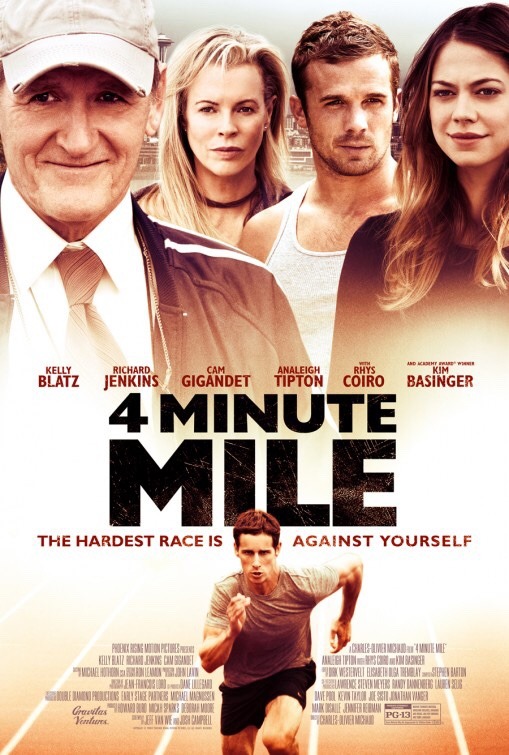
“4 Minute Mile”
Directed by Charles Olivier-Michaud
#movies 2014#charles olivier-michaud#4 minute mile#kim basinger#kelly blatz#richard jenkins#analeigh tipton#cam gigandet
4 notes
·
View notes
Text
Story of Ted Bundy
TW: execution photos, details of deaths
**a more detailed victim list will be posted later, beware of this post if you are sensitive to blood/gore/other oddities of true crime as it will have crime scene photos**
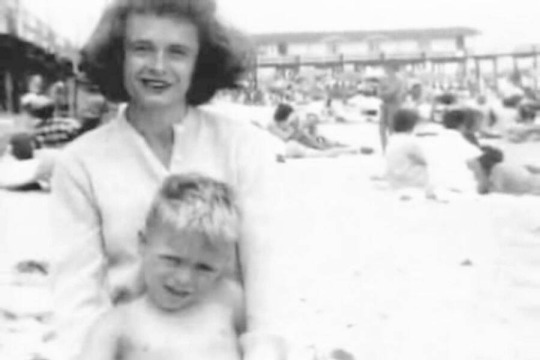
Theodore Robert Cowell, was born on November 24th, 1946 to Eleanor Louise Cowell at the Elizabeth Lund Home for Unwed Mothers. Eleanor was known by Louise and Ted’s father’s identity is unconfirmed. His birth certificate states Lloyd Marshall, a salesman and Air Force veteran, as his father. Louise claims his father to be an old war veteran known as Jack Worthington, this is who the King’s County Sheriff’s Office has listed as such. A few family members believe that Louise’s father, Samuel Cowell, could’ve been Ted’s father but no evidence has been found to support this claim.
Ted was raised in Philadelphia, Pennsylvania by his maternal grandparents for the first three years of his life. He, family, and friends, were told that his grandparents were actually his parents and that his mother was his older sister in order to protect them all from the stigma of birthing a child out of wedlock. There are variations of how Bundy found out his true parentage. A past girlfriend was told that Bundy was shown his birth certificate by a cousin, Stephen Michaud and Hugh Aynesworth (both biographers) were told by Bundy that he found the certificate himself. Anne Rule (biographer and crime writer, who knew Bundy personally) believes he did not find this information until 1969. In 1950, Louise changed her surname from Cowell to Nelson and left Philadelphia to live with cousins Alan and Jane Scott in Tacoma, Washington. In 1951, Louise met Johnny Culpepper Bundy at an adult singles night at Tacoma’s First Methodist Church. Johnny and Louise later married that year and Johnny formally adopted Ted. Johnny and Louise went on to have four children together, and whilst Johnny tried including Ted on family trips and outings, he remained distant.

Teenage Ted Bundy
In 1965, Ted graduated from Woodrow Wilson High School and enrolled in the University of Puget Sound where he spent a year before transferring to the University of Washington to study Chinese. In 1967, he became involved romantically with a UW classmate, most commonly known as Stephanie Brooks in biographies. In 1968, he dropped out of college and worked at a series of minimum wage jobs; even working as Arthur Fletcher’s bodyguard and driver during his Lieutenant Governor campaign. Brooks then ended their relationship due to Bundy’s lack of ambition. He also took one semester at Temple University after returning back to Arkansas and Philadelphia to visit family. In 1969, Ted moved back to Washington where he met Elizabeth Kloepfer (also known in Bundy literature as Liz Kendall, Beth Archer, or Meg Anders).

Ted Bundy & Elizabeth Kloepfer
In 1970, Ted re-enrolled at the University of Washington as a psychology major. During this time he became an honor student and was well regarded by his professors. In 1971, he took a job at Seattle’s Suicide Hotline Crisis Center, where he met Anne Rule who noted nothing disturbing or abnormal about Bundy. In early 1973, despite his average law school admission scores, he was granted admittance to UPS and the University of Utah. In 1973, he rekindled his relationship with Stephanie Brooks. He also continued to date Elizabeth Kloepfer. Neither woman knew of the other at this time. During this time period, Brooks had flown in several times to stay with him in Seattle. He had discussed marriage with Stephanie and had also introduced her as his fiancee at a point. In 1974, he abruptly broke off all contact. He did not return phone calls or letters. After a month of trying, Brooks was finally able to contact Bundy by phone, asking why he had so abruptly ended the relationship without an explanation. He responded with, “Stephanie, I have no idea what you mean.” and hung up the phone. She never heard from him again after that. He had just wanted to prove to himself that he could marry her in retaliation of her ending their former relationship before.
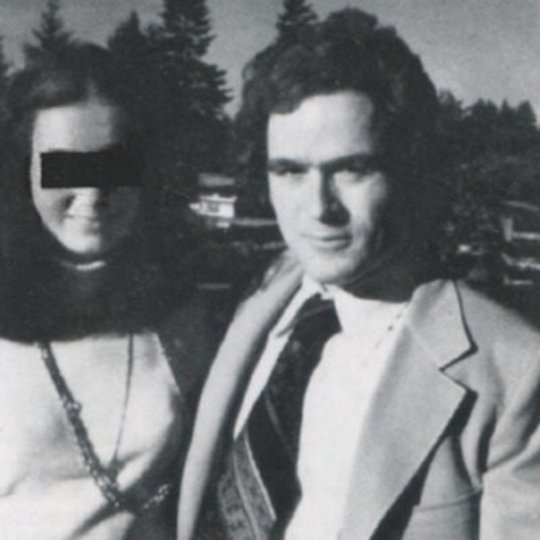
Ted Bundy and Stephanie Brooks
Ted had been skipping classes in law school by this point and had stopped attending all together by april when the first series of murders were reported. Circumstantial evidence points Ann Marie Burr, an 8-year-old girl, as one of Bundy’s first victims in 1962.
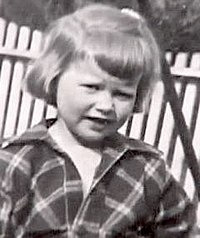
Ann Marie Burr, age 8
Washington/Oregon Murders
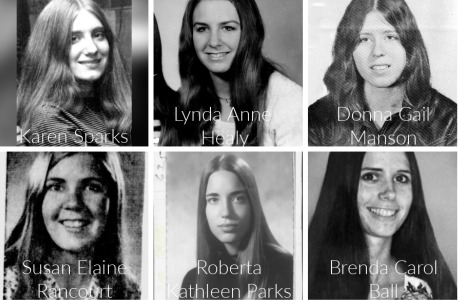

College aged young women started to disappear at a rate of about one a month in Washington and Oregon. On January 4th, 1974, shortly after midnight, Bundy snuck into the basement apartment of 18-year-old Karen Sparks (also known as Joni Lenz, Mary Adams, or Terri Caldwell in Bundy literature). He bludgeoned her with a metal rod from her bed frame and then sexually assaulted her with the same rod. She was unconscious for 10 days but survived. She sustained major permanent physical and mental disabilities. In the early morning of February 1st, 1974, Bundy broke into the basement bedroom of Lynda Anne Healy. He beat her until she was unconscious, dressed her in a white blouse, blue jeans, and boots and carried her away from the scene. On March 12th, 1974, Donna Gail Manson, a 19-year-old student at the Evergreen State College in Olympia went missing as she left her dorm to attend a jazz concert that she would never attend. April 17th, 1974, Susan Elaine Rancourt disappeared from Central Washington State College, on her way back to her dorm after an advisors meeting. Two female students later came forward with encounters with the same man. One was on the night of Susan’s disappearance and the other was three days before that. The man had his arm in a sling and had asked the girls for help loading his books into a brown or tan Volkswagen beetle. In Corvallis at Oregon State University, on May 6th, 1974, Roberta Kathleen Parks, left her dormitory to meet friends for coffee and she never arrived.
Police precincts were growing more and more concerned with each abduction. As they had no evidence or connection between each of the girls besides they were all young, attractive, college-aged, white women with their brown hair parted down the middle. On June 1st, 1974, Brenda Carol Ball, disappeared from the Flame Tavern in Burien, near the Seattle-Tacoma International Airport. She had last been seen in the parking lot with a brown-haired man with his arm in a sling. Not too long after that, on June 11th, 1974 Georgann Hawkins disappeared walking down a brightly lit alleyway between her boyfriend’s dormitory and her own sorority house. After Georgann’s disappearance was made public in the media, witnesses came forward reporting that they saw a man that night in an alley behind a nearby dormitory. He was on crutches with a leg cast and was struggling to carry a briefcase. Another witness had said that the man actually asked for her help. At this time Ted was working in Olympia as the Assistant Director of the Seattle Crime Prevention Advisory Commission. He wrote pamphlets for women on rape prevention here. He also later worked at the Department of Emergency Services (DES), which helped look for the missing women. This is where he met Carol Anne Boone, and began dating her (as well as Elizabeth Kloepfer).
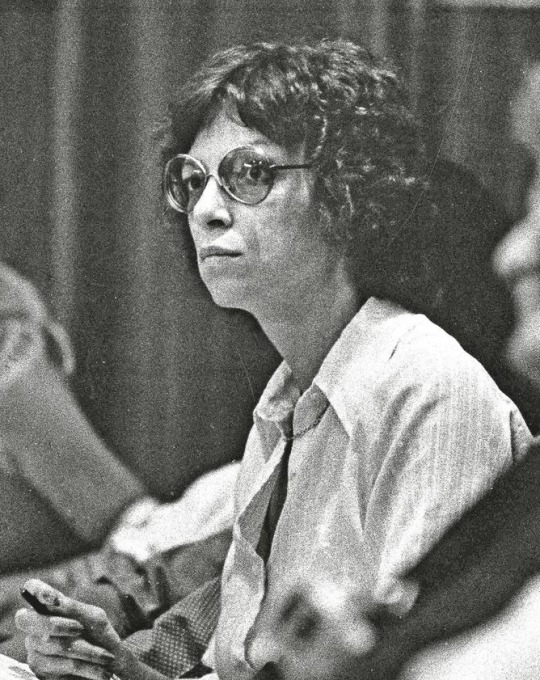
Carol Anne Boone
Pressure was immense on law enforcement at this time. This was very frustrating as panic spread through young women of the area, with six disappearances and one brutal beating. Rates of hitchhiking in young women dropped drastically. Police could not provide reporters with what little information they had because they did not want to compromise the investigation. Similarities between the victims were noted by the police in their investigations: The disappearances all took place at night, each disappearance was usually near ongoing construction work, also within a week of midterm or final exams. Every single victim was wearing slacks or blue jeans; and at most crime scenes, there were sightings of a man wearing a cast or a sling, and driving a brown or tan Volkswagen Beetle. On July 14th, 1974, five female witnesses on a beach at Lake Sammamish State Park in Issaquah, Washington, described an attractive man in a white tennis outfit with his arm in a sling. They also described him speaking in a light accent, possibly Canadian or British, and was introducing himself as Ted. He asked for their help in unloading a sailboat from his Volkswagen beetle. Four of the girls refused but one accompanied him to the point of the car in view. When she did not see a sailboat, she fled the area. Three other witnesses saw the man, now known as Ted, saw him approach Janice Ann Ott. He fed her the sailboat story and she was seen leaving the beach with him. Four hours after Janice’s disappearance, Denise Marie Naslund, vanished after leaving a picnic to use the restroom.
Idaho/Utah Murders and Kidnappings
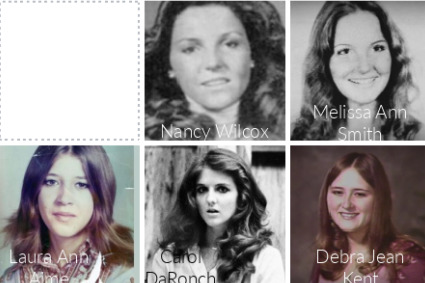
In August 1974, Ted moved to Salt Lake City, Utah, after receiving a second letter of acceptance from the University of Utah Law School. He continued to call Elizabeth Kloepfer as he lived in Salt Lake, but dated at least a dozen other women at the time. On September 2nd, 1974, Ted abducted, raped, and murdered a still unknown hitchhiker in Idaho. On October 2nd, 1974, Ted kidnapped 16-year-old Nancy Wilcox from Holladay, a suburb of Salt Lake City. On October 18th, 1974, The daughter of the police chief of Midvale, Melissa Anne Smith, vanished after leaving a pizza parlor. Her body was found nine days later, nude, in a mountainous area. Postmortem reports say she may have remained alive for up to seven days after her disappearance. On October 17th, 1974, Laura Ann Aime disappeared after leaving a cafe around midnight. Her body was found by hikers, nine miles northeast of American Fork Canyon on Thanksgiving Day. Both, Melissa and Laura had been beaten, raped, sodomized, and were strangled with nylon stockings. November 8th, 1974, Ted approached Carol DaRonch, introduced himself as Officer Roseland and used the story of someone attempting to break into her car and to accompany him to the police station to make a report. When Carol pointed out that he was not going to the police station, he immediately pulled over to the shoulder of the road and tried to handcuff her. In their struggle, he accidentally handcuffed both cuffs to the same wrist. Carol was able to throw the door open and escape because of this. On the same evening, Debra Jean Kent disappeared after leaving a theater production to pick up her brother. The school's drama teacher and a student told police that "a stranger" had asked each of them to come out to the parking lot to identify a car. Another student later saw the same man pacing in the rear of the auditorium, and the drama teacher spotted him again shortly before the end of the play. Outside of the auditorium, investigators were able to recover a key that unlocked the handcuffs on Carol DaRonch’s wrists.
In November, Elizabeth Kloepfer called King County police for the second time, after reading about the string of disappearances and murders in the towns surrounding Salt Lake. Bundy had risen considerably as a suspect among the King County Police, but the most reliable witness from Lake Sammamish could not identify in a photo lineup. In December, Elizabeth called the Salt Lake City police with her suspicions. Ted was then added to their list of suspects, but there were no credible forensic links to put him at any of the Utah crimes. In January of 1975, Ted returned to Seattle and stayed a week with Elizabeth. She did not tell him she had reported him to the police on three occasions. She also made plans to visit him in August of 1975 in Salt Lake. Unfortunately, Ted’s crimes moved to Colorado at this point.
Colorado/Utah/Idaho Murders

January 12th, 1975, Caryn Eileen Campbell disappeared walking down a well lit hallway between the elevator and her room at the Wildwood Inn in Snowmass Village, Colorado. Her body was found a month later on a dirt road next to the resort, nude. On March 15th, 1975, Julie Cunningham disappeared while walking to a dinner date with a friend from her apartment. April 6th, 1975, Denise Lynn Oliverson vanished while riding her bicycle to her parents house. Her bike and sandals were found near a railroad bridge in a viaduct. May 6th, 1975, Ted was able to lure 12-year-old Idaho native from Alameda Junior High School, Lynette Dawn Culver, to his hotel room in Salt Lake City, where he drowned and raped her. He disposed of her body in possibly the Snake river north of Pocatello. In Mid-May, three of Ted’s coworkers from DES came to stay with him for a week. This included Carol Anne Boone. They stayed for about a week. Subsequently, Ted visited Elizabeth Kloepfer in early June. They discussed getting married the following Christmas. She again made no comments about her talking to police on several occasions. Ted also did not disclose his ongoing relationship with Carol Anne Boone or his relationship with a Utah law student known as both; Kim Andrews or Sharon Auer. June 28th, 1975, Susan Curtis disappeared from the campus of Brigham Young University, forty-five miles south of Salt Lake City. In August of 1975, Ted was also baptized into The Church of Jesus Christ of Latter Day Saints although he did not follow any of the religious practices and was not an active participant in services.
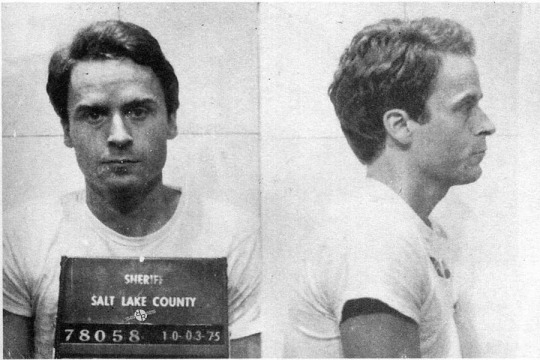
On August 16th, 1975, Officer Bob Hayward of the Utah Highway Patrol, arrested Ted in Granger. This was another suburb of Salt Lake City. Hayward had observed him cruising the residential area in the pre-dawn hours. Ted then fled the area at high speeds after seeing Hayward’s patrol car. After noticing the front passengers seat was removed and placed on the back seat, the car was searched. Hayward found a ski mask, another mask fashioned from pantyhose, a crowbar, handcuffs, trash bags, rope, an ice pick, and other burglary tools. Ted had said that the mask was for skiing, he found the handcuffs in the dumpster, and the rest were household items. Detective Jerry Thompson remembered a similar looking suspect and car description from Carol DaRonch’s attempted kidnapping. Police then searched Bundy’s apartment and were able to turn up a guide to Colorado’s ski resorts with a checkmark next to the Wildwood Inn. They were also able to find a brochure for Viewmont High School play in Bountiful where Debra Kent disappeared. They although did not find enough evidence to detain Ted and he was released on his own recognizance. Ted claimed later that investigators missed his collection of polaroid photos of his victims and he destroyed them after his release. Salt Lake police placed Ted under a 24 hour surveillance.
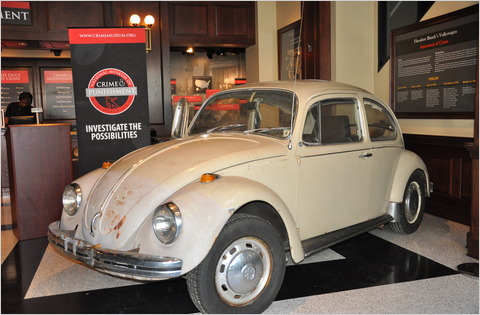
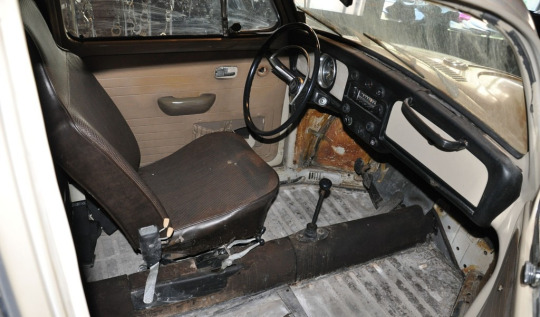
Detective Thompson flew to Seattle with two other detectives to interview Elizabeth Kloepfer. Elizabeth told them that in the year prior to Ted’s move to Salt Lake, she had discovered things that she "couldn't understand" in her house and also in Ted's apartment. The items she found included crutches, a bag of plaster of Paris that he had admitted stealing from a medical supply house, and a meat cleaver that was never used for cooking. Additional things she found included surgical gloves, an Oriental knife in a wooden case that he just kept in the glove compartment of his car, and a sack full of women's clothing. Ted was so far into debt, that Elizabeth suspected that he had stolen almost everything of significance that he owned. When she confronted him over a new TV and stereo, he warned her, "If you tell anyone, I'll break your fucking neck.” Elizabeth then mentioned that she would find Ted looking at her body with a flashlight under the covers on more than one occasion, and that he would get very upset if she mentioned cutting her hair. Which was long, brown, and parted in the middle. Detectives interviewing Elizabeth were able to confirm that Ted was not with her on any of the nights where the Pacific Northwest disappearances occurred. This is where Elizabeth learned about Stephanie Brooks and their brief engagement in 1973. In September, Ted sold his beetle to a Midvale teenager, but Utah police impounded it and dismantled it. They were able to find matching hair samples from Caryn Campbell. They also found “microscopically indistinguishable” hair strands from Melissa Smith and Carol DaRonch. On October 2nd, 1975, Police put Ted into a lineup and Carol DaRonch was able to identify him as Officer Roseland. Other witnesses were able to identify him as the stranger from the auditorium at Viewmont High School. He was able to be charged with aggravated kidnapping and attempted criminal assault in Carol DaRonch’s case. He was released on $15,000 bail, which was paid by his parents. He continued to live with Elizabeth Kloepfer during this time.
In February 1976, Ted stood trial for Carol DaRonch’s kidnapping. He waived his right to trial by jury because of the negative views surrounding the case and opted for a bench trial. After a four day trial, and a weekend of deliberation, Ted was found guilty of kidnapping and assault. In June he was sentenced to one to fifteen years in the Utah State Prison. In October, he was found hiding in bushes in the prison yard carrying an "escape kit". This included road maps, airline schedules, and a social security card. He spent several weeks in solitary confinement for this. Later in October, Colorado authorities charged him with Caryn Campbell's murder. He waived his right to extradition and was transferred to Aspen in January 1977.

June 7, 1977, Ted was transported from the Garfield County jail in Glenwood Springs to Pitkin County Courthouse in Aspen for a preliminary hearing. He waived his right to a court appointed attorney and opted to serve as his own, and as such, was excused by the judge from wearing handcuffs or leg shackles. During a recess of the trial, he asked to visit the courthouse's law library to research his case. While out of view from his guards, behind a bookcase, he opened a window and jumped to the ground from the second story. He managed to injure his right ankle in the process as he landed. He shed the outer layer of his clothing. He walked through Aspen as roadblocks were being set up on its outskirts after noticing his disappearance, then hiked southward onto Aspen Mountain. Near the summit of the mountain, he broke into a hunting cabin. He was able to steal food, clothing, and a rifle. The following day he left the cabin and continued south toward the town of Crested Butte. Although, during this time he had managed to get lost in the forest. For two days he wandered aimlessly in the mountain forest, missing the two trails that led downward to his intended destination. On June 10th, 1977, he broke into a camping trailer on Maroon Lake, taking food and a ski parka; instead of continuing southward, he walked back north toward Aspen, eluding the roadblocks and search parties along the way. Three days later, he stole a car at the edge of an Aspen Golf Course. He drove back into Aspen, where two police officers noticed his car weaving in and out of its lane and pulled him over. He had been a fugitive for six days.
Back in jail at Glenwood Springs, Ted again ignored legal advice to stay put (not to try to escape again). It was said that the case against him, already weak at best, was deteriorating steadily as pre-trial motions consistently resolved in his favor and significant bits of evidence were ruled inadmissible. A quote stating, "A more rational defendant might have realized that he stood a good chance of acquittal, and that beating the murder charge in Colorado would probably have dissuaded other prosecutors... with as little as a year and a half to serve on the DaRonch conviction, had Ted persevered, he could have been a free man.” had shown that. But instead, Ted assembled a new escape plan. He acquired a detailed floor plan of the jail and a hacksaw blade from other inmates, and collected $500 in cash. This was smuggled in over a six-month period, by visitors, Mostly Carol Boone. During the evenings, while other prisoners were showering, he sawed a hole about one square foot, between the steel reinforcing bars in his cell's ceiling and, having lost 35 pounds, he was able to wriggle through it into the crawl space above. In the weeks that followed, he made several “practice runs”, exploring the space. Multiple reports from an informant of movement within the ceiling during the night were not investigated. By late 1977, Bundy's impending trial had become very high flying in the media in the small town of Aspen. Ted then filed a motion for a change of venue to Denver. On December 23rd, 1977, the Aspen trial judge granted the request, but he was sent to Colorado Springs, where juries had historically been hostile to murder suspects. On the night of December 30, with most of the jail staff on Christmas break and nonviolent prisoners on furlough with their families. Bundy piled books and files in his bed, covered them with a blanket to simulate his sleeping body, and climbed into the crawl space. He broke through the ceiling into the apartment of the chief jailer, who had been out for the evening with his wife. He changed into street clothes from the jailer's closet, and literally walked out the front door to his freedom.
Florida Murders and Assaults

Ted arrived in Tallahassee, Florida on January 8th, 1978, and rented a room under the alias of Chris Hagen at the Holiday Inn. Here Bundy tried to find work and leave his criminal past behind, thinking he’d be able to remain free if he didn’t bring police suspicion onto himself. He then was forced to leave his only job application after being asked to provide identification. He reverted to shoplifting and stealing credit cards from women’s wallets out of shopping carts. On January 15th, 1978, he entered Florida State University’s sorority Chi Omega. Starting at 2:45am, he bludgeoned Margaret Bowman and then garoted her with a nylon stocking. He moved on to Lisa Levy’s bedroom, who was beaten unconscious, strangled her, tore one of her nipples, bit deeply into her left buttock, and sexuallly assaulted her with a hair mist bottle. In the bedroom adjoining Lisa's, he attacked Kathy Kliener. He had broken her jaw and had a deep laceration on her shoulder. Karen Chandler was also attacked in her bedroom, she suffered a concussion, loss of teeth, a broken jaw, and a crushed finger. Kathy and Karen both survived and attributed their survival to the attacker being scared off by headlights illuminating through the window. The whole attack happened within fifteen minutes with thirty witnesses in earshot who seemingly heard nothing. Shortly after leaving the sorority, Ted broke into the basement apartment of Cheryl Thomas, eight blocks away. He dislocated her shoulder and fractured her jaw and skull in five different places during this attack.

On February 8th, 1978, he approached the daughter of Jacksonville chief of Police, 12-year-old Leslie Parmenter, introducing himself as “Richard Burton, fire department”. He only backed off when challenged by Leslie’s older brother who had shown up to pick her up. That day, he backtracked to Lake City. February 9th, 1978, at Lake City Junior High, 12-year-old Kimberly Dianne Leach was summoned to retrieve a forgotten purse in her homeroom class and was never seen afterwards. Her mummified remains were found seven weeks afterwards in a pig farrowing shed near Suwannee River State Park. It appears she had been raped (her underwear was found near the body with semen in them) and her throat had been slit. On February 12th, 1978, Bundy could not pay his rent and had the growing suspicion that police were closing in on him, he decided to flee Tallahassee. Three days later he was apprehended by Pensacola officer, David Lee, near the Alabama border. In Miami, June of 1979, Ted stood trial for the Chi Omega killings and assaults. The jury deliberated for less than seven hours before convicting him on July 24, 1979, of the Bowman and Levy murders, three counts of attempted first degree murder and two counts of burglary. In January 1980, six months after his first Florida convictions, Ted stood trial in Orlando for the kidnapping of Kimberly Dianne Leach. After less than eight hours of deliberation, Ted was found guilty again. During the penalty phase of his trial, Bundy took advantage of an obscure Florida law; providing that a marriage declaration in court, in the presence of a judge, constituted a legal marriage. As he was questioning former Washington State DES coworker Carole Ann Boone, who had moved to Florida to be near Bundy, had testified on his behalf during both of his trials, and was again testifying on his behalf as a character witness, asked her to marry him. She accepted, and Bundy declared to the court that they were legally married. February 10th, 1980, Ted’s was sentenced to death by electrocution for the third time. In October of 1981, Carol Anne Boone, gave birth to a daughter and named Ted Bundy as the father.
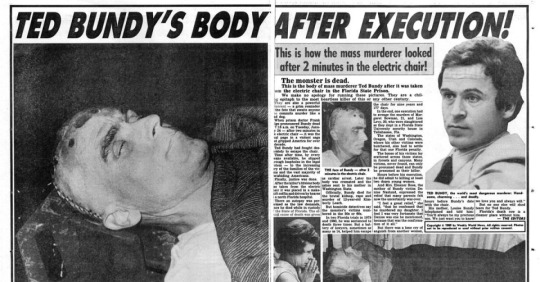
Ted Bundy died by the Raiford electric chair at 7:16 a.m. EST on January 24, 1989. Hundreds of revelers sang, danced and set off fireworks in a pasture across from the prison as the execution was carried out, then cheered as the white hearse containing Bundy's corpse departed the prison. He was cremated in Gainesville, Florida and his ashes scattered at an undisclosed location in the Cascade Range of Washington State, in accordance with his will.
18 notes
·
View notes
Text
starter for @jas-michaud

– “JAS, WAIT!” HE PRACTICALLY RUNS TO CATCH UP WITH HER, a little out of breath by the time he reaches her ( because he’s literally run across campus after catching the slightest glimpse of her across the courtyard. ) he doesn’t mind, though. after seeing her in the state she was during the lockdown, he’d probably run miles. however, it takes him a few moments to actually say anything to her, since he has to catch his breath first. “hi,” he finally greets, pushing his hair up out of his face as he looks at her, already nervous. “how – how are you ? i’m sorry we lost each other during the lockdown, but i...i hope you found some of your friends, at least,” he offers her a sincere smile, “are you alright ?”
20 notes
·
View notes
Video
youtube
Allah Las - Polar Onion
Allah Las’ new video / single, Polar Onion, which comes from the new album LAHS, that comes out 11th October 2019 on Mexican Summer. This video was made by Bailey Elder with additional footage by Miles Michaud.
Allah Las are an American indie rock band from Los Angeles, California, formed in 2008. The band consists of Matthew Correia (percussion), Spencer Dunham (bass), Miles Michaud (vocals, guitar) and Pedrum Siadatian (lead guitar).
Links: Facebook | Twitter
#Allah Las#USA#indie rock#indie music#music#indie#rock#garage rock#alternative rock#alternative#2019#new muisc#new video#Rebjukebox#Jungle Indie Rock
13 notes
·
View notes
Text
Allah-Las with Mapache 12/12/19
Outside this historic Mayan building, there stood people of all ages waiting to groove along to the peaceful soundscapes that Allah-Las are known for. Allah-Las released their latest album, LAHS, in October, and the show at the Mayan was their second-to-last stop before taking a break until February. Hailing from the Los Angeles are, frontman Miles Michaud said it was good to return home.
Before Allah-Las took stage, the audience was mystified by a duo known as Mapache. They each played bossa nova inspired music coupled with their haunting harmonies. They used the stone acoustics of the Mayan to their advantage and created a reverberating effects across the crowd. The guitar stylings encompassed bolero-like virtuosity–at the same time energetic yet euphoric and calming. Members in the crowd were cheering them on as each musician managed to shred on a nylon-string acoustic guitar. Every song was met with applause once they finished their final note. They’re definitely an artist to keep an eye out for.
Allah-Las showed up and the crowd roared with excitement. They opened with Sacred Sands from their first album, Allah-Las. The song was a prophetic hypnotizing groove with a wild percussion section. Immediately, people in the front row felt their way into the music and began dancing like nymphs at a mythical lake. The show continued on with rigorous musicality. At one point the band brought out the members of Mapache and they all sang a song reminiscent of an old Crosby Stills Nash & Young track, complete with maracas and tambourines. At this point, the energy was high and even the older members of the audience were getting down to the grooves. Lead guitarist Pedrum Siadatian’s fingers flew up and down the fretboard during solos that caused the crowd to scream. The Mayan had a giant disco ball that they lowered that added to the vintage feel of the music. Everyone was entranced in the music, so when the band played their final song people were incredulous. As one might expect, they crowd demanded one more song. So after a minute or two, the band came back to play crowd favorite from the debut album, Catamaran. The audience collectively knew this was the last chance to groove to an Allah-Las track until they come back home again. They gave it their all to the very last beat, and went home sweaty and satisfied.
Mapache became a new favorite artist for a lot of people in the Mayan. You can catch their debut LP, Lonesome LA Cowboy on their website.
Allah-Las have one last stop in Pioneertown, CA before they take a break for two months and head to Australia. Their latest album can be found on their website.
Overall, this show was one for the books.
1 note
·
View note
Text
The Things They Carried
Tim O'Brien’s critically acclaimed retrospective on the Vietnam War has influenced the titles of two of my favorite posts. This is one of them. I love Dorothy Brown-Kwaiser’s concluding comment that we all have non-functional items that really don’t count against the base pack weight of life. Bacon Bit thru-hiked in 2012 and penned this post that is worth revisiting annually’.
By Dorothy “Bacon Bit” Brown-Kwaiser
(Big Bear, mile 266 to 278 = 12 miles)
If I remember right, that’s the title of a book or short story that we read in one of Ms. Ruth Michaud’s high school English classes. I don’t remember it well, but I know the title referred to the personal items that soldiers kept with them during times of war. This is not a war, but we have those kinds of things on trail, too. And on today’s easy breezy hike, I was thinking about mine.
But first I must explain that many of us know what each item in our pack weighs to the tenth of an ounce. We carry as little as we are comfortable with. My base weight (without food, fuel, and water) is around 17 pounds. I have sent home extra socks, my mug and replacement mug, my belt, the lid to my pot (made one of foil), an extra sports bra, insoles, extra batteries, extra bandages, Tylenol, an emergency blanket, the Data Book, my journal, and a T-shirt. All of this to shed ounces that turn into pounds. And yet, I carry a handful of items of no physical use and would never consider sending them home. Here they are:
I have two gorgeous and unnecessary stuff sacks that a friend got in Guatemala. I love the colors, and I use them to store my electronics, which are not so beautiful. I think it gives them better energy. I also keep my mp3 player in a small Jazzercise sack that my Jazzercise ladies gave me. I don’t need any of these sacks really, but they make me happy when I see them. My store-bought stuff sacks are great, but they have no meaning.
I have ribbons clipped to the outside of my bag with an alligator clip. The clip is from Jazzercise. The ribbons were on a gift from Ann Maureen Scully, one of the female rangers I work with and deeply admire. They are what I hope this trip will be – light, bright, happy, colorful, and springing with energy.
I have a dead mouse from my late kitty, Scout. That stuffed mouse has been killed too many times to count. Scouters was my little boy and my best bud. He was a little over a year old when he was hit and had just turned from the cute runt with huge paws into a handsome, athletic, full-grown cat. I still miss him terribly and find myself replaying all moments up to finding him in the road. When the going gets rough, I reach into my pocket and squeeze that mouse. Scout and I had a shared passion for the outdoors.
And last but not least, I have the written word. A couple of poems, cards, and quotes from friends. Two letters from my mate. (Who, it turns out, has a wise old 80-year-old inside him, too; and this side comes out in letters. The wise old 80-year-old lady inside me is also in love.) All of these I turn to as needed or reflect upon as I hike down the trail lost in thought. I have read most of them enough that I can just pull out lines and turn them over in my mind. There is plenty of time to think out here.
We all have things like this in our life … little bits and pieces that usually have no monetary value or physical purpose, but that we would never get rid of. The values are intangible and cannot be measured. They do not count against the base pack weight of life. For they are what make the burden bearable.

It could be worse!
12 notes
·
View notes
Text
INTERVIEW: Miles Michaud of Allah-Las
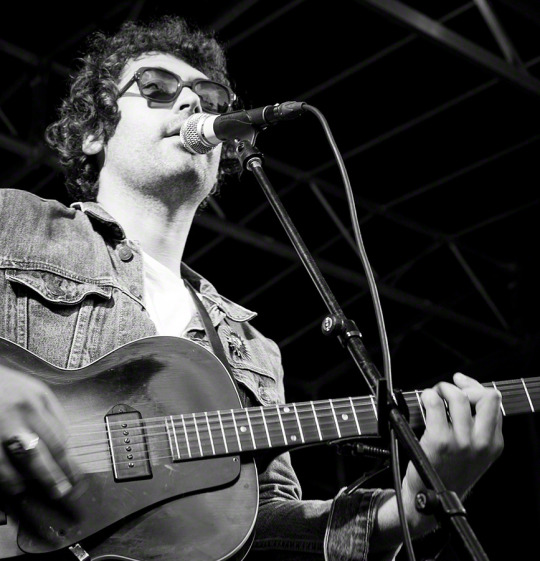
WTBU DJ Emily Pintor recently spoke to Miles Michaud, the lead singer of the Allah-Las, about the band’s beginnings, their latest album, and college radio. The LA native surf rock band is playing Brighton Music Hall on March 25 at 8 p.m. with Babe Rainbow.
Emily Pintor: So let’s start with the basics; how did the Allah-Las come together? I know that three of you guys worked at Amoeba, but did you purposely put the band together or did you all just start jamming one day?
Miles Michaud: Yeah, we just started to hang out and jam together. Like a few weeks after we started, some of our friends asked us to play their Halloween party in their backyard, and we were happy to accept the offer. We didn’t really have any songs; we just kind of improvised, but we put together some stuff and it sounded cool so that gave us the motivation to keep going. We played whatever we could.
EP: When you guys first started playing together did everyone seem to be on the same page? Was there a cohesive sound?
MM: I actually think that’s why the Allah-Las started. We all had similar taste in music and when we got together to play, it just kind of came out. It was something we were all happy with.
EP: From what I’ve seen and read you guys all seem to have very informative depths of musical knowledge. You all are so insightful, which is awesome, but do you ever think that hinders your musical process? Maybe makes you too aware of what you’re doing like, “Oh that riff sounds like that band” etc.
MM: I think it actually helps us externally. We just have a higher standard of what we want to create. It’s sort of become prerogative to meet our standards, and people seem to appreciate it.
EP: Congratulations on releasing your third album. Did you guys go about recording this one differently or was it just about the same as the first two?
MM: Well, song structure was a little different. We had released two albums and been on the road for some time, so this time everyone was writing a lot more stuff and would individually bring it here to the studio and then kind of piece it all together. From there, we would all work on it together, so actually the same process in the recording studio, but more ideas that came individually.
EP: Writing and producing the record and then touring the record are both integral parts of a successful band; which do you enjoy more? Or are they both just as satisfying in different ways?
MM: Well I think there’s moments in the studio when you get really frustrated, and also moments on tour when you get really burned out, but there’s great things about those, too. But I think the best feeling for me is listening to the final product after months and months of working on it—being able to hear it and play it knowing that it’s done. When you think about it, that’s the most rewarding thing I think.
EP: When you all go in to make a new record, what outlook do you take on it? Do you try to evolve the sound you already have or experiment with something new?
MM: A bit of both. We always try to incorporate some things that will create a new sound. It’s actually what we’re working on right now; we’re at the studio right now working on something new. So right now I’m taking a little break sitting outside.
EP: That’s awesome; you guys clearly keep busy. I read recently that you were a college radio show host for some time. WTBU has many radio DJ’s, myself included, so I’m just wondering what you got out of your experience?
MM: Well it was tough, because I started from 2 a.m. to 6 a.m., so that was a little rough, but I eventually got moved from 9 a.m. to noon. But I think what was cool about it was getting feedback from people who would listen and were really stoked about the music we were playing. It kind of opened up that idea that there were people out there other than my friends that were interested in this music I really liked. I guess that kind of translated into the band as well when we started. Now we all do a podcast and just take turns rotating what we’re going to play.
EP: In terms of the music, LA seems to be a great influence on the album. Your music videos are set there, and some lyrics pertain to specific places there, but I was just wondering what else was an influence on the album?
MM: Hard to say; there’s a lot of different things. Because a lot of songs were written individually and then brought to the album, everyone kind of brought their own themes and concepts. There are lot of different things, but Los Angeles comes through heavily moreso for listeners than for us I feel. We don’t necessarily see or hear that. It’s good to know that other people hear it though.
0 notes
Text
Revisión y resumen de 4 Minute Mile (2014)
Revisión y resumen de 4 Minute Mile (2014)
El director Charles-Olivier Michaud y los guionistas Josh Campbell y Jeff Van Wie aprovechan este raro momento de humor para decir lo que todos pensamos como espectadores. Aún así, los cineastas siguen siendo implacables al revisar una lista de verificación de convenciones de género. Está el niño de buen corazón en el lado equivocado de las pistas, el mentor que busca su propia redención, el…
View On WordPress
0 notes
Video
youtube
Allah Las - In The Air
The Allah Las are back with a new video for the tune, In The Air, which is taken from the new album, LAHS, out October 11th on Mexican Summer. This video was directed by Sam Kristofski and stars Allah Las and Kirin J Callinan.
Allah Las are an American indie rock band from Los Angeles, California, formed in 2008. The band consists of Matthew Correia (percussion), Spencer Dunham (bass), Miles Michaud (vocals, guitar), and Pedrum Siadatian (lead guitar).

Links: Facebook | Twitter
#Allah Las#USA#Indie rock#music#indie music#indie#indie folk#folk rock#rock#new music#new video#mlb 2019#Rebjukebox#Jungle Indie Rock
5 notes
·
View notes